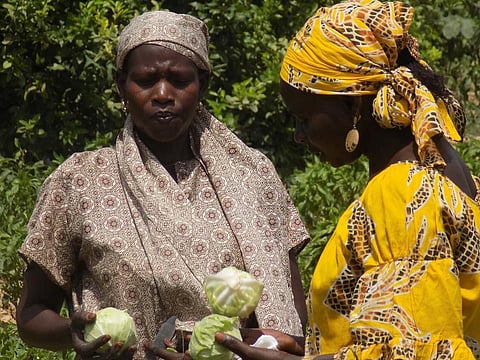

Digital transformation of the agriculture sector could address food insecurity in sub-Saharan Africa, paving the way for prosperity in the region, a recently released report by the United Nations Food and Agriculture Organization (FAO) has said.
Vast populations in sub-Saharan Africa still experience acute food insecurity. Eighty-two per cent of Malawians experience moderate or severe food insecurity, followed by about 7.7 million people in the Democratic Republic of Congo and about 3.3 million people in Burkina Faso.
This is despite the fact that sub-Saharan Africa has the largest area of arable uncultivated land in the world. It also has a youthful population and vast natural resources. It is thus uniquely positioned to double or even triple its current agricultural productivity, according to the report.
Such an increase in agricultural productivity would help lift more than 400 million people in sub-Saharan Africa who live on $1.9 or less a day, out of poverty. It would also improve the livelihood of approximately 250 million smallholder farmers and pastoralists in the region, the report said.
A comprehensive approach of digital technology and policy reform could increase crop production by more than 500 per cent in some countries across the region, with positive results for food security and livelihoods, according to a separate study published by the Global Challenges Research Fund Programme.
But for that, a digital transformation of the food and agriculture sector was needed. The FAO report assessed the region’s digital agriculture landscape through six key themes:
The report noted that digital ecosystems in each of sub-Saharan Africa’s 47 countries were evolving with new policies, initiatives, innovations and stakeholders.
Some countries in the region had agriculture policies that aligned with the Comprehensive Africa Agriculture Development Programme.
However, digital agriculture was still not emphasised in policies. A few countries had started drafting digital agriculture strategies. Benin, Rwanda, Niger, Nigeria and the African Union had published the Digital Transformation Strategy for Africa (2020–2030).
The report warned that much of the continent remained unconnected. About one-third of the population is still out of reach of mobile broadband signals, with just 22 per cent having access to the internet.
According to the report, coastal countries benefit from fast internet due to undersea cables and 4G mobile networks are expanding rapidly across the continent.
The report suggested that a digital readiness index is necessary to assist countries in understanding and transforming their digital agriculture landscape toward policy formulation, targeted interventions, resource allocation, partnership establishment and informed decision-making.
The report, Status of digital agriculture in 47 Sub-Saharan African Countries is co-published by FAO and the International Telecommunication Union.